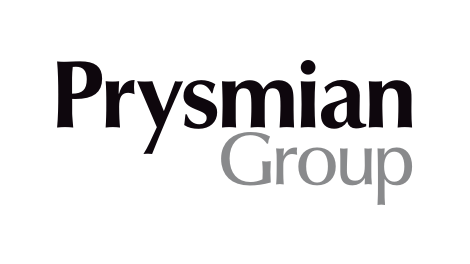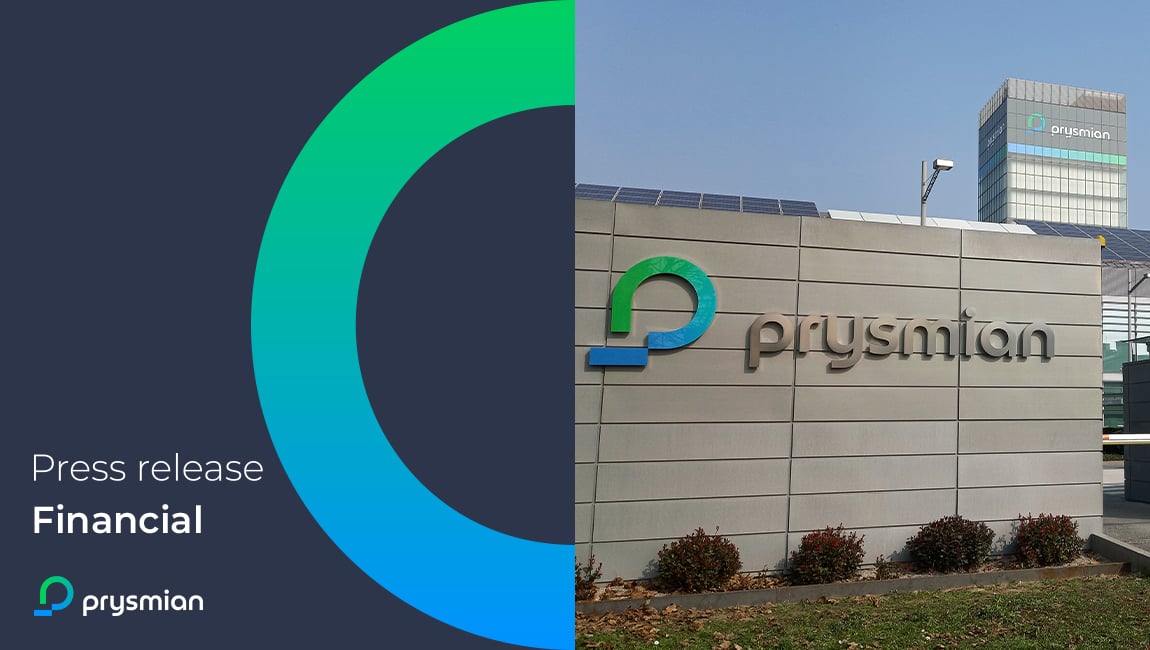Prysmian – Prysmian to acquire Warren & Brown, Australian leader in Telecommunication Network Connectivity Products
Prysmian strengthens its position as a solution provider in connectivity
Prysmian, leader in the energy transition and digital transformation, announces to have signed an agreement to acquire Warren & Brown Technologies, the Australian leader in telecommunication network connectivity products.
The acquisition represents a strategic milestone for both companies, combining Prysmian’s expertise in Digital Solutions technologies with Warren & Brown’s resources, capabilities and strength in enterprise solutions for the Telecom market.
The transaction is in line with Prysmian’s “Connect, to lead” strategy to become a global solution provider to enable energy transition and digital transformation.
Warren & Brown is the Australian leader in telecommunication network connectivity products, providing solutions to telecom operators for various applications mainly in the business of FTTA and FTTH & Data Centre. Founded in 1921, the Company is headquartered in Melbourne, operates 3 main production sites, 2 in Australia (Melbourne) and 1 in Philippines (Manila) and generates annual revenue of approx. 90 million AUD (approx. €55 million)
The transaction is subject to regulatory approvals and customary conditions
SourcePrysmian Group
EMR Analysis
More information on Prysmian: See the full profile on EMR Executive Services
More information on Valerio Battista (Group Chief Executive Officer, Prysmian Group until 18th of April, 2024 + Proposed Candidate as Vice-Chairman of the Board of Directors as from 18th of April, 2024): See the full profile on EMR Executive Services
More information on Massimo Battaini (Group Chief Operating Officer and Executive Director, Prysmian Group until 18th of April, 2024 + Designated Chief Executive Officer as from 18th of April, 2024): See the full profile on EMR Executive Services
More information on Pier Francesco Facchini (Group Chief Financial Officer and Executive Director, Prysmian Group): See the full profile on EMR Executive Services
More information on Maria Cristina Bifulco (Chief Investor Relations, Sustainability and Communication Officer, Prysmian Group): See the full profile on EMR Executive Services
More information on “Connect, to Lead” Strategy – The new 5-years (2023-2027) Business Strategy by Prysmian: See the full profile on EMR Executive Services
More information on the Prysmian Sustainability Strategy: See the full profile on EMR Executive Services
More information on Warren & Brown Technologies: https://www.warrenandbrown.com.au/ + Warren & Brown Technologies is an Australian owned company, world renowned for innovation in optical fibre termination, distribution and management systems, world leading copper structured cabling and external plant products, as well as for its precision tools for the industrial and automotive industries.
Furthermore, with modern production facilities and customer support teams in the Philippines, Warren & Brown Technologies is able to service the SE Asian market, supporting many leading telecommunications carriers.
In addition, the company is well established in most major world markets including USA, England, Europe, South East Asia, South Africa, Australia, Middle East, New Zealand, India and South America. Success has been gained through a total company commitment, constant servicing of markets, strong market research and market responsive product development.
In essence Warren & Brown is an agile technology company, strongly focused on product development to meet the ever-changing needs of a dynamic global market.
Established in 1921, Warren & Brown Technologies (WBT) has evolved to become a leader in telecommunications network connectivity infrastructure and precision tools. With capabilities in R&D, product design, manufacturing and logistics solutions, WBT is a technology partner for many global organizations, providing telecommunications network connectivity infrastructure, renewable energy infrastructure solutions and precision tools.
Warren & Brown Technologies products and solutions are available under various brands, servicing diverse markets, including Telecommunications network providers (fixed line and wireless solutions), Data Centre & Enterprise, Infrastructure, Harsh Environment, Renewable energy, Industrial and Automotive networks
- 200+ Employees
- 6 Sales Offices
- 3 Manufacturing Facilities
- Worldwide Distribution
- Annual revenue of approx. 90 million AUD (approx. €55 million)
More information on David Henderson (General Manager, Warren & Brown Technologies, Prysmian): See the full profile on EMR Executive Services
EMR Additional Notes:
- Optical Cable:
- An optical cable transfers audio digitally, but instead of copper wire, light is used. This is a variation of fiber optics, which is used in a variety of applications.
- The biggest difference between Optical Cables and HDMI is that HDMI can pass higher-resolution audio, including the formats found on Blu-ray: Dolby TrueHD and DTS HD Master Audio. These formats can’t get transmitted across optical. In terms of simplicity, HDMI also passes video signals.
- Types of Network Cabling:
- Coaxial Cable:
- Coaxial cables or coax, have a single copper conductor at the center, while a plastic layer provides insulation between the center conductor and braided metal shield. The metal shield blocks outside interference from fluorescent lights, motors, and other computers.
- Twisted Pair:
- Twisted pair uses copper wires that are, as the name suggests, twisted together in pairs. The twist effect of each pair in the cables ensures any interference presented or picked up on one cable is canceled by the cable’s partner that twists around the initial cable. Twisting the two wires also reduces the electromagnetic radiation emitted by the circuit.
- Shielded Twisted Pair (STP) Cable:
- In STP, copper wires are first covered by plastic insulation. A metal shield, which consists of metal foil or braid, surrounds the bundle of insulated pairs. Where electromagnetic radiation is a serious issue, each pair of wires may be individually shielded in addition to the outer shield. This is known as foil twisted pair (FTP).
- Unshielded Twisted Pair (UTP) Cable:
- UTP cables typically contain four pairs of copper wires, with each pair containing two wires twisted together. These pairs are covered by plastic insulation. They do not have any shielding and just have an outer jacket.
- Most categories of twisted-pair cables are available as UTP. But some newer categories are also available in combinations of shielded, foil shielded and unshielded.
- Shielded Twisted Pair (STP) Cable:
- Twisted pair uses copper wires that are, as the name suggests, twisted together in pairs. The twist effect of each pair in the cables ensures any interference presented or picked up on one cable is canceled by the cable’s partner that twists around the initial cable. Twisting the two wires also reduces the electromagnetic radiation emitted by the circuit.
- Fiber Optic Cable:
- Fiber optic cables consist of a thin optical fiber surrounded by cladding. Cladding is made from glass that is less pure than the core and has a lower refractive index than the core. The difference in refractive indices causes light to be reflected at the boundary. Additional layers, such as the buffer layer and jacket layer, surround the cladding to add strength and protect the cable against damage.
- Data rates have increased throughout the network, and in some cases, fiber optics is the only option. While Cat8 twisted-pair cables can carry up to 40 Gbps of data, fiber supports data rates up to 400 Gbps.
- Fiber has a low error rate. Network data is encoded in a light beam. Unlike with twisted-pair cables, the light beam neither generates nor is affected by electronic interference. Additionally, multiple frequency data streams can be multiplexed over a single fiber to increase the total data rate.
- Coaxial Cable:

- FTTx:
- Fiber to the Home (FTTH), Fiber to the Building (FTTB), Fiber to the Premises (FTTP) and Fiber to the Curb (FTTC), termed as FTTx are various technology and deployment options developed to enable reach of fiber as close to the user location as possible to provide high speed data and voice services.
- Fiber to the home (FTTH) is the delivery of a communications signal over optical fiber from the operator’s switching equipment all the way to a home or business, thereby replacing existing copper infrastructure such as telephone wires and coaxial cable.
- FTTP and FTTH are two different abbreviations for the same thing. FTTP stands for ‘fibre to the premises’ and FTTH stands for ‘fibre to the home’. … Unlike FTTC, FTTP broadband is delivered via fibre-optic cables not only as far as the cabinet, but across the entire span to your home or business.
- Fiber-optic cables are less susceptible to glitches than traditional copper wires and can withstand the shock and vibration from inclement weather. FTTH is considered “future proof” and offers the flexibility to deliver additional services in the years to come.
- Fiber To The Antenna (FTTA) is a broadband network architecture in which optical fiber is used to connect the remote radio head (RRH) to the base station in new antennas, or retrofitted in existing ones, to replace all or part of the coax local loop. It replace much of what was traditionally completed with heavier coax cabling.

- Key Differences Between Copper Cable and Fiber Optics:
- Data transmission speed of a fiber cable is comparatively more than that of copper cable. Copper cables are nearly 31% slower in data transmission than fiber cable.
- A copper cable transmits the data through it in the form of electrical pulse i.e., due to the movement of electrons. As against in a fiber optics, the data transmission is the result of movement of photons thus it transmits in the form of light pulses.
- The bandwidth provided by a copper cable is less than that of the fiber optics. Thus, a copper cabling meets the industry standards and provides a performance of up to 10 Gbps. However, a fiber optics due to its large bandwidth possess better performance of up to 60 Tbps and above.
- The energy consumed by a copper cable during its operation is somewhat greater than 10W but on the other side, fiber optics consumes less energy i.e., around 2W per user.
- The lifespan of a copper wire is approximately 5 years as it gets easily affected by temperature variations and other environmental factors. However, fiber optics possess a lifespan of 30 to 50 years.
- As fiber optics are difficult to be tapped as compared to copper cables thus proves advantageous from the security point of view. Due to this reason fiber optics are widely used for data transmission at present time.
- A fiber optics allows transmission of data at a much faster rate as compared to copper cable.
- The installation and maintenance cost of a fiber cable is more than copper cable.
- Data Centers:
- A data center is a facility that centralizes an organization’s shared IT operations and equipment for the purposes of storing, processing, and disseminating data and applications. Because they house an organization’s most critical and proprietary assets, data centers are vital to the continuity of daily operations.
- Hyperscale Data Centers:
- The clue is in the name: hyperscale data centers are massive facilities built by companies with vast data processing and storage needs. These firms may derive their income directly from the applications or websites the equipment supports, or sell technology management services to third parties.


